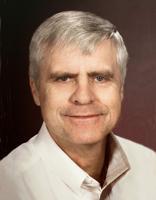A troubling assessment from the state’s leading epidemiologist should give us pause, if not alarm, about how a politically divided society might come to reject the basic science of health care.
Dr. Michael Osterholm told the Star Tribune in a recent report that he fears a growing distrust of science will lead to low acceptance and use rate of vaccines.
The low use rate for the updated COVID vaccine points to a larger problem of a significant portion of our divided society carrying a “don’t tell me what to do” attitude around things involving public health. While some of that has to do with partisanship, in that Democrats accept vaccines much more than Republicans, the more serious threat are the divides beyond political that have widened the gaps of who believes in public health and science.
Four years past the start of the pandemic, there appears to be less enthusiasm for getting up to date on COVID vaccines. The latest state report shows just 1% of the high risk 65-year-old and older group getting the latest vaccine as recently recommended by the CDC. Seniors may just need a month to catch up as the new guideline took place only recently, but the overall rate is also low at just 12.5%.
A recent Pew study showed a widening gap between Democrats and Republicans on getting the vaccine. When vaccines became available in 2020, 93% of Democrats got it while 78% of Republicans did so. The 15 percentage point gap is now about 42 points, with Democrats at 66% and Republicans at 24%. There’s also a 16% gap on the flu shot, according to the study.
The widening gap is not just about differences between the parties on taxing and spending, but Democrats and Republicans are dividing along lines of gender, race, religiosity and education.
We see signs of that everywhere with debates about transgender health care, immigration (a proxy for race), teaching of diversity in public schools and book banning. The number of things we divide on are growing and ignited by bad actors.
As we differ on religiosity and education, experts see that as tracking to discounting and undermining science itself as religion and education are often tied to beliefs about science.
Osterholm, the director of the University of Minnesota’s Center for Infectious Disease Research and Policy, wrote a 2005 article “Preparing for the Next Pandemic” that shot to the top of the most read list when the pandemic hit in 2020. He notes that its message of supply chain issues and vaccinations would likely fall on deaf ears today.
“To get people to buy into public health again isn’t quite as difficult as trying to move the Grand Canyon to southwest Minnesota, but it’s damn near,” Osterholm told the Star Tribune.
The days of the 1995 Mankato meningitis outbreak — in which the entire city was vaccinated in four days — are gone, according to Osterholm who said he couldn’t imagine it today.
So it seems our divisiveness may just be the thing that kills us.
What can we do?
Monica Guzman, author of the book “I Never Thought of It That Way: How to Have Fearlessly Curious Conversations in Dangerously Divided Times” says conversations can be harmful to both sides if each isn’t willing to listen. We should change the question from: “Why do you believe what you believe?” to: “How did you come to believe what you believe?”
Guzman told Minnesota Public Radio that changing that question moves the conversation from a trial-like investigation to wanting to know more about a person’s journey to believe the things they do. Even if they rely on conclusions not drawn from the facts, their story remains true, at least to them, Guzman notes.
In the end, it may be difficult to change someone’s mind. Osterholm sees that as leading to public health problem that requires a new communication or political strategy to inform and get people to act.
But with the onslaught of social media and partisan news channels overloading clarity with chaos, the road to putting science at the forefront will be determined by our own willingness to speak the truth.





















Commented
Sorry, there are no recent results for popular commented articles.